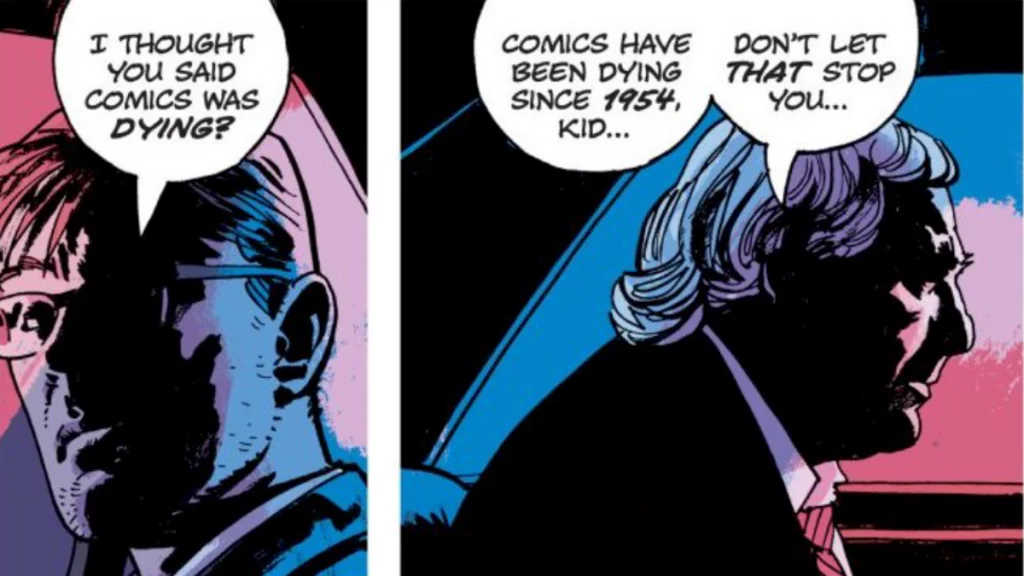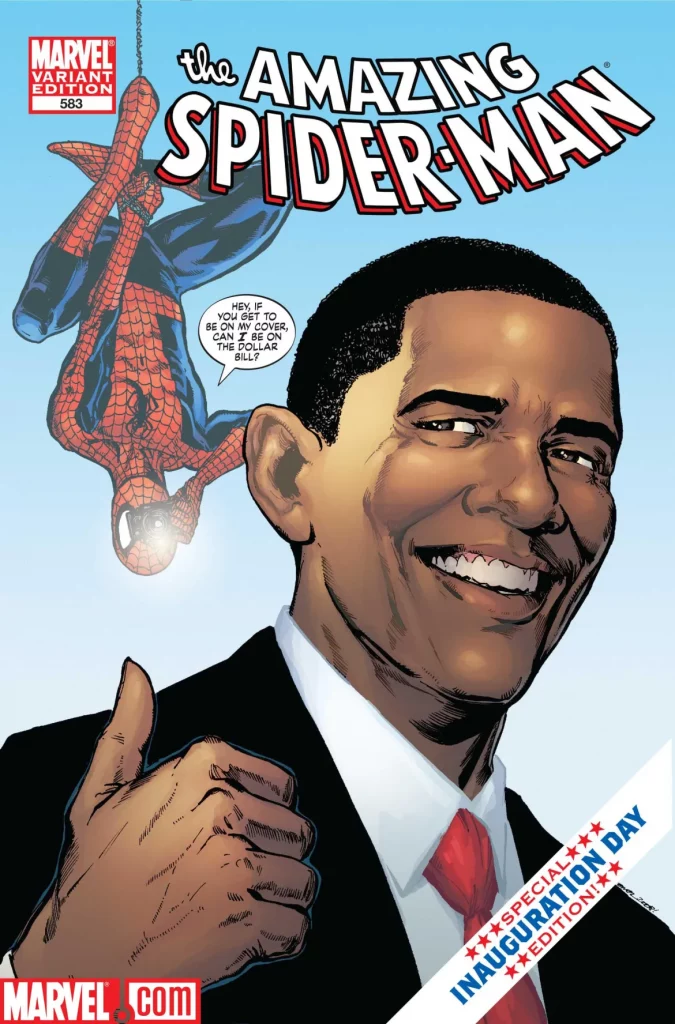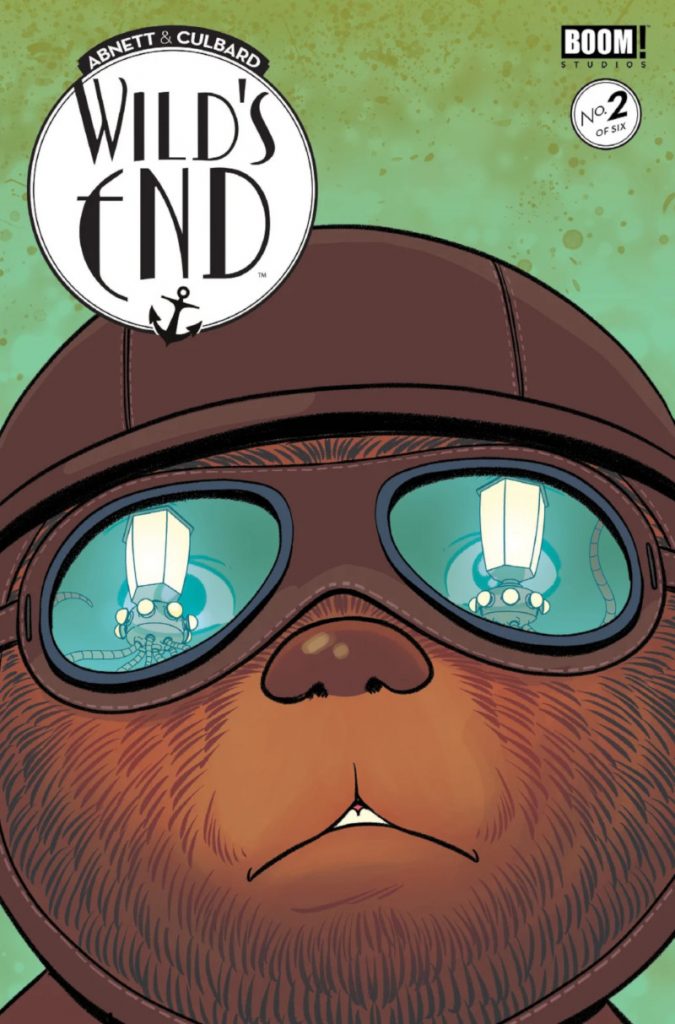Comic Books and the Eternal Demise
One of the most vivid early memories I have as a comics fan was connected to Superman’s death in 1992. It wasn’t even about the comic itself. It was because my comic shop, Bosco’s in Anchorage, Alaska, hosted a wake for the Man of Steel. All were invited to celebrate Superman’s life at the shop’s mall location, and my family went, of course. While there, we joyfully talked with other fans and participated in a kazoo-filled parade around the mall, letting anyone in our vicinity know about the glory of Superman, even as we mourned his loss.
So, ever since the beginning, I knew one thing for sure: people in comics love a good funeral.
That idea has been regularly reinforced since I started writing about comics in 2009. While it’s been a fascinating and exciting 14-year stretch, one subject has remained a constant in the ongoing conversation about the medium and its industry. It isn’t about how incredible comics are or the talented folks who craft them. It’s nothing like that. It’s something you’ve likely heard yourself. It’s that comics are dying, 1 and that we all have front row seats for its funeral.
It’s a subject I’m quite familiar with, even before the most recent conversation on the topic began. After all, that year I started writing about comics?
They were dying then too.
2009 was a challenging year for the direct market, one that came in the middle of a four-year run of sales dropping. In fact, without the towering orders for Amazing Spider-Man #583 — you know, the issue with a cover and story co-starring President Barack Obama — that year would have been even more dire. It was assuredly the beginning of the end, once again. I know that’s true because people made it abundantly clear that it was. Don’t believe me? It doesn’t take more than 30 seconds of searching to find articles from that year earnestly wondering, “Are comic books dying?”
The points made within that piece were understandable. They’re also familiar. Lamentations of the price point for single issues rising, then to $3.99. Questions about editorial decisions. Frustration over money grabbing practices. The focuses are so typical you could have changed a few aspects 2 and updated the part about digital comics to have an article that would fit 2023.
There’s always some reason that comics are dying. We’re constantly one second away from midnight on the doom and gloomsday clock, wearing our finest clothing as we again talk about the end of all things. But the thing that’s often missed in the conversation is what happens after the clock does indeed strike midnight. What typically follows the low points, like the one I first experienced in 2009?
The high points.
While direct market sales reached its nadir for that stretch in 2011 at a total of $414 million, that was also when the corner was turned. DC’s The New 52 launched that August. The rise of Image was in full effect, with The Walking Dead’s ascent and the pending arrival of Saga leading the way. The Marvel NOW! relaunch hit the following year, the first in a series of line-wide resets for the publisher. 3 By the time 2016 hit, sales were up to $580.91 million, a nearly 36% increase from where things were just five years previous.
If you chart everything out, you’ll quickly realize that the direct market is in a constant rotation of peaks and valleys. It’s cyclical, with theoretical endings often begetting new beginnings. All this has happened before, and all this will happen again. That doesn’t mean it will continue forever. But history suggests a rebound is usually on the horizon.
This isn’t a comics exclusive idea, either. It reminds me of something someone said on Twitter recently. It was podcaster Tyler Puryear, or DragonflyJonez as he’s known on the platform, who quote tweeted someone wondering, “If rap music is dying, what’s gonna replace it?”
Puryear’s take was simple. “Rap will never die. It just hits periods where it stagnates until some new blood comes along and shakes shit up. We went thru the ‘hip hop is dying’ phase before. Then the blog era happened and that shit was a whole ass renaissance.” Switch out “rap” and “hip hop” for “comics” and you’ll pretty much come up with what we’re seeing now. Comics aren’t dying. The medium and its industry are just changing.
And that isn’t a bad thing.
If you read retailer Phil Boyle’s column on ICv2 this past week, you likely have guessed that this is at least in part a response to what he had to say. While some of Boyle’s points were valid, he lost me with one made early on. He said, “Marvel and DC, you blew it. Or maybe you just succeeded in your plan to kill off an American art form of which you’ve been the able stewards of for 80 years.” While there are other frustrating points, 4 that one is the crux of his whole argument because it reveals how narrow his view of comics even is.
Let’s flashback to that 2011 to 2016 period I mentioned earlier. That was undeniably a banner stretch for the direct market. It was also immense for the long-term viability and health of comics as an art form. Amidst all those good times for the direct market were a sea of changes in the broader comics space. There was a surge in sales for middle-grade and young adult graphic novels, one that continues to this day. Webtoon launched in English and Kickstarter became a more widely adopted platform for creators over that period too. Manga was gearing up to become the titan of the medium it is today, with future powerhouse My Hero Academia debuting in English at the end of that timeframe, amongst others. Things were changing, and changing fast.
The art form is still thriving in 2023. Anyone who has put in the time to read the new material the comic book medium has to offer knows this. Whether you’re talking about exceptional single issue reads like Wild’s End, w0rldtr33, and Damn Them All, graphic novels from legends like Daniel Clowes or up-and-comers like Brenna Thummler, any number of manga or webtoon titles, or a one-month surge from the new, exciting talents highlighted in the ShortBox Comics Fair, fans of the medium are eating well these days — if they’re willing.
Boyle’s takes aren’t entirely off base, of course. There are problems in the business of selling comics that need resolving. The direct market is undeniably in a slump, as retailers struggle to navigate a crisis largely created by the short-sighted tactics of their varying partners. Many of the publishers in the direct market have been poor stewards of that side of the industry and the medium itself, focusing on profit today above any semblance of sustainability. Marvel in particular is in a malaise. Beyond that, broader economic concerns are impacting sales in comics — and all forms of entertainment, really — as income has become much less disposable of late for consumers. 5 Shops are facing genuine headwinds, although I suspect many retailers would question the validity and impact of several of the points Boyle cited.
That’s the thing people often forget when one of these opinion pieces go up. The direct market is a decentralized channel comprised of a couple thousand specialty shops, most of which are operated by individuals who do things and view things differently than all their peers, in ways both subtle and substantial. That individuality makes it special. It also makes it difficult to find a truly representative take. That’s why the takeaway from his piece shouldn’t be that comics are once again dying. It’s that things could and should improve in specific ways.
And for improvement to come, it’ll take those in all facets of the direct market — including retailers themselves — to be willing to embrace change. That isn’t a lock to happen. Many people on this side of the industry have been in the business for decades and are steadfast in their beliefs because of that longevity. I get it. But the reality is some of the most common complaints aren’t even bad things, per se. They’re just different. And that can be a tough pill for some to swallow.
But change is necessary, because the only reason things are like this is because those involved allowed — and even encouraged through their orders — it to happen. If you don’t like how things are, it’s incumbent upon you to find solutions as well as problems, and to act in a way that promotes the adoption of said solutions. That includes Boyle, someone whose Coliseum of Comics chain of shops can have an outsized impact on what comes next through the ordering decisions they make — if they choose to do so.
One way or another, though, comics? The art form? It’s not going anywhere. Comics existed before the direct market, and they’ll exist after its demise. That probably won’t be any time soon. I had greater doubts on where things were headed at the end of 2022 than I do now. I suspect 2024 will actually see a bit of a recovery in the direct market. The lows do typically precede the highs, as I noted before. Time will tell if that’s true once again.
Whatever comes next, though, I can only be certain of two things. This won’t be the last time we hear that comics are dying.
And it’ll survive that as well.

If you enjoyed this piece, consider sharing it on social media and/or subscribing to SKTCHD for more pieces like it.
And all the associated variants that come along with. You know the flavors. “Comic shops are dying!” “The floppy is dying!” “Superhero comics are dying!” Etc. Etc.↩
Replace $3.99 with $4.99 and the note about One More Day with something about the current Amazing Spider-Man run.↩
This strategy of endless relaunches eventually saw diminishing returns, but the first for both DC and Marvel were undeniably impactful.↩
Amongst others, the parts about “gender-bending” and the one about proselytizing. Did I not mention earlier that the most ordered comic of 2009 featured the actual U.S. President on its cover and in its story?↩
This is arguably the biggest issue of them all for shops, but it isn’t as industry specific and it’s one with less obvious solutions so it typically gets less play in the conversation.↩


